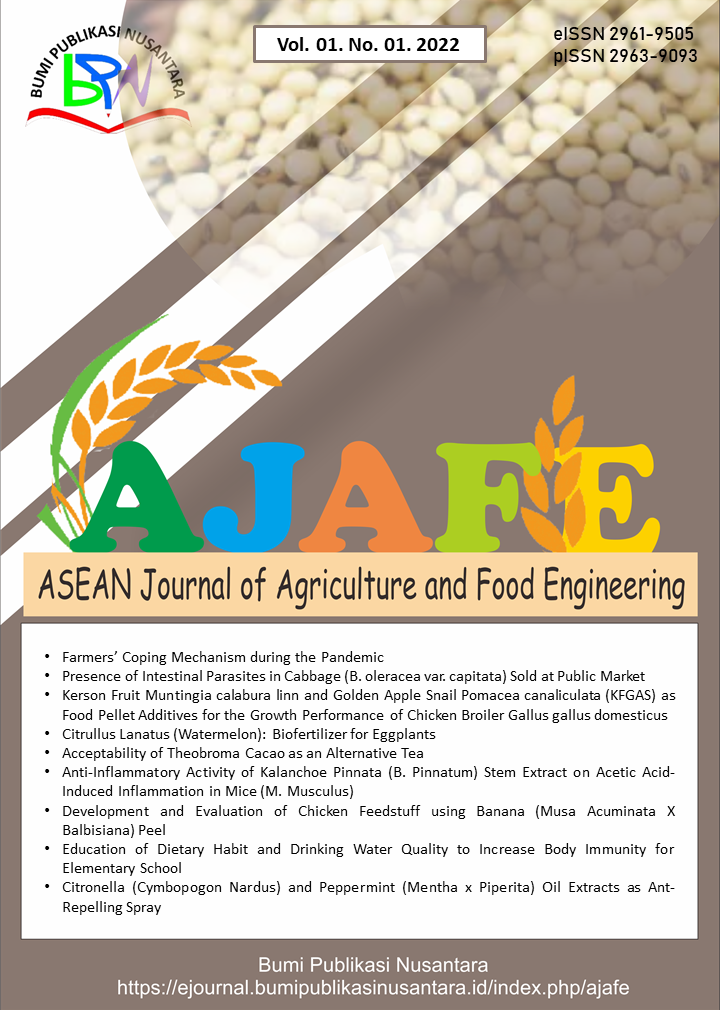Acceptability of Theobroma Cacao as an Alternative Tea
 ), Karylle M. Jordan(2), Jesh Ashley I. Suarez(3), Uriah Zane M. Gesalan(4), Czarina Joy Carlet(5), Anamarie G. Valdez(6),
), Karylle M. Jordan(2), Jesh Ashley I. Suarez(3), Uriah Zane M. Gesalan(4), Czarina Joy Carlet(5), Anamarie G. Valdez(6),
(1) Sultan Kudarat State University
(2) Sultan Kudarat State University
(3) Sultan Kudarat State University
(4) Sultan Kudarat State University
(5) Sultan Kudarat State University
(6) Sultan Kudarat State University
 Corresponding Author
Corresponding Author
Abstract
Keywords
References
Ho, C. T., Zheng, X., and Li, S. (2015). Tea aroma formation. Food Science and Human Wellness, 4(1), 9-27.
Phillips‐Mora, W., Aime, M. C., and Wilkinson, M. J. (2007). Biodiversity and biogeography of the cacao (Theobroma cacao) pathogen Moniliophthora roreri in tropical America. Plant Pathology, 56(6), 911-922.
Rincón-Barón, E. J., Zarate, D. A., Agudelo-Castañeda, G. A., Cuarán, V. L., and Passarelli, L. M. (2021). Micromorphology and ultrastructure of anthers and pollen grains in ten elite genotypes of Theobroma cacao (Malvaceae). Revista de Biología Tropical, 69(2), 403-421.
Sarkar, N., Ghosh, S. K., Bannerjee, S., and Aikat, K. (2012). Bioethanol production from agricultural wastes: An overview. Renewable Energy, 37(1), 19-27.
Wickramasuriya, A. M., and Dunwell, J. M. (2018). Cacao biotechnology: Current status and future prospects. Plant Biotechnology Journal, 16(1), 4-17.
Wilkinson, C., Dijksterhuis, G. B., and Minekus, M. (2000). From food structure to texture. Trends in Food Science and Technology, 11(12), 442-450.
Zhang, L., Cao, Q. Q., Granato, D., Xu, Y. Q., and Ho, C. T. (2020). Association between chemistry and taste of tea: A review. Trends in Food Science and Technology, 101, 139-149.
Article Metrics
Abstract View : 2160 times
: 2160 times Download : 1722 times
Download : 1722 times
Refbacks
- There are currently no refbacks.
Copyright (c) 2022 Yayasan Bumi Publikasi Nusantara

This work is licensed under a Creative Commons Attribution-ShareAlike 4.0 International License.



_publication_ethics.png)



